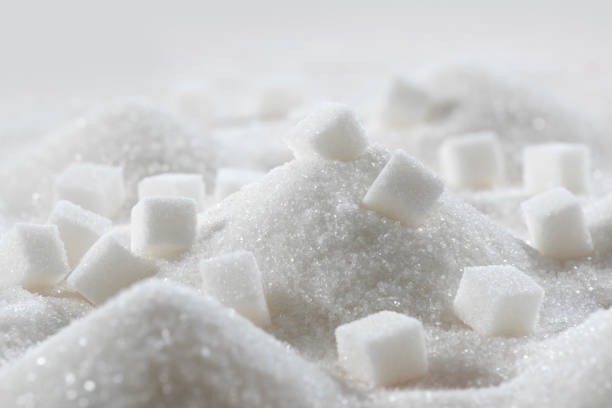NAVIGATING SUGAR FUTURES: HOW TRADERS HEDGE AGAINST PRICE VOLATILITY
In the unpredictable world of commodity trading, sugar prices can swing in many ways. This blog breaks down how hedging with sugar futures works, why it’s crucial for supply chain stability, and the strategies traders use to stay competitive in a volatile market.
C. Michelle
6/29/20253 min read


📈 Navigating Sugar Futures: How Traders Hedge Against Price Volatility
Sugar may seem like a simple pantry staple, but in the world of commodities trading, it’s a dynamic asset subject to global forces, from weather patterns in Brazil to government subsidies in India. For traders and procurement professionals, sugar futures offer a powerful tool to manage risk and lock in margins. In this post, we’ll break down how sugar futures work, why they matter, and how to use them strategically.
🧭 What Are Sugar Futures?
Sugar futures are standardized contracts traded on exchanges like the Intercontinental Exchange (ICE) and the New York Board of Trade (NYBOT). These contracts obligate the buyer to purchase (or the seller to deliver) a specific quantity of sugar at a predetermined price and date.
• Contract type: Sugar No. 11 (raw cane sugar) is the global benchmark
• Contract size: 112,000 pounds (approx. 50.8 metric tons)
• Pricing unit: U.S. cents per pound
• Settlement: Physical delivery or cash settlement
Why Is Sugar So Volatile?
Sugar prices fluctuate due to:
Weather Disruptions (droughts, hurricanes in Brazil/India)
Government Policies (subsidies, export bans, tariffs)
Energy Prices (sugar vs. ethanol demand in Brazil)
Currency Movements (USD/BRL exchange rate impacts Brazilian exports)
Global Demand Shifts (rising consumption in Asia/Africa)
Example: In 2024, sugar prices surged after El Niño damaged Thai harvests, while Brazil diverted more cane to ethanol.
🛡️ Hedging with Sugar Futures: A Trader’s Playbook
Hedging is the practice of offsetting potential losses in the physical market by taking an opposite position in the futures market. Here’s how it works:
1. For Producers and Exporters
A sugar mill in Brazil expects to sell raw sugar in six months. To protect against falling prices, it sells Sugar No. 11 futures today. If prices drop, the loss in the physical market is offset by gains in the futures position.
2. For Buyers and Importers
A confectionery company in Egypt plans to buy sugar in three months. To hedge against rising prices, it buys futures now. If prices spike, the cost increase is offset by gains in the futures contract.
3. For Speculators
While not hedging, speculators provide liquidity. They bet on price movements without holding physical sugar, often using technical analysis and macroeconomic indicators.
Major Sugar Futures Exchanges
ICE Futures U.S. (Intercontinental Exchange)
Trades Sugar No. 11 (global benchmark) and Sugar No. 16 (US-focused).
Settled in USD, physically deliverable.
Euronext (Europe)
Trades White Sugar Futures (refined EU beet sugar).
Zhengzhou Commodity Exchange (China)
Domestic white sugar futures (influenced by Chinese demand).
🧮 Calculating the Hedge
Let’s say a trader buys one Sugar No. 11 contract at 20¢/lb. If the market rises to 22¢/lb:
• Profit = (22¢ - 20¢) × 112,000 lbs = $2,240
This gain can offset higher procurement costs in the physical market.
Advanced Hedging Strategies
A) Spread Trading
Trade the price difference between raw (No. 11) and refined (No. 5) sugar.
Example: If refining margins are high, buy raw and sell refined.
B) Options on Futures
Buy call options (betting on price rises) or put options (betting on drops).
Limits downside risk vs. outright futures.
C) Cross-Commodity Hedging
Sugar vs. ethanol or oil futures (since Brazilian mills switch production)
🔍 Key Considerations
Factor Why It Matters
Basis Risk The difference between futures and physical prices can affect hedge accuracy.
Margin Requirements Futures trading requires initial and maintenance margins—cash flow matters.
Contract Expiry Traders must roll over or close positions before expiry to avoid delivery.
Liquidity Sugar No. 11 is highly liquid, but timing and volume still affect execution.
🚀 Strategic Tips for Sugar Futures Traders
Use technical analysis to time entries and exits
Monitor crop reports from Brazil, India, and Thailand
Watch ethanol markets—they influence sugarcane allocation
Diversify hedging tools—consider options and swaps for more flexibility
🧠 Final Thoughts
Sugar futures aren’t exclusive to financial experts—they’re an essential resource for anyone involved in sugar procurement, exports, or production. Effective hedging allows traders to safeguard profit margins, minimize risk, and stay ahead in an unpredictable market. Given the impact of weather, policy changes, and global trade dynamics on sugar prices, futures contracts play a key role in managing volatility. For producers, refiners, and large-scale buyers, mastering these tools can determine whether they secure steady earnings or face significant setbacks.
TRADING
Expertise in commodities trading, advisory, and procurement management services.
CONTACT
Churchill Executive Towers, Office 900 Business Bay, Dubai, UAE
801 Brickell Ave Ste 811 Miami, FL 33131
Dubai - 971 55 117 7276
Miami - 305 461 0016 info@stonekingdomcap.com
